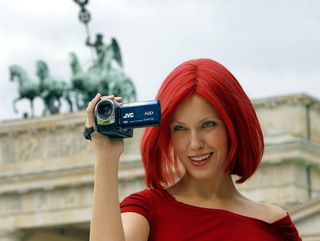Best of Berlin for IFA attendees
IFA 2008: what to do when you're not at the show

So you've booked your hotel and travel for IFA 2008 in Berlin, got an idea of the stands you want to visit, and you're ready for the show. But beyond IFA, this fantastic city has a lot to offer. Why not enjoy it while you're there?
Berlin, like Tokyo and Los Angeles, is a city without a recognisable centre. Instead it has six or seven central neighbourhoods all competing for your attention. Mitte has the best galleries and museums; Charlottenburg the most glamorous shopping street; Potsdamer Platz the finest of the post-wall rebuilding; Prenzlauer Berg and Friedrichshain most of the coolest clubs, while Kreuzberg is where the artists live and play.
Where to go
If this is your first visit to the city, then opt for the area around Hackescher Markt, the one area in Berlin that has all these things in abundance. This area, although more touristy than most, offers a frank introduction to both the history and the contemporary culture of the city. Situated in the former east, the surrounding area has grown rich since reunification. Here are a host of world-famous museums and other attractions, many of them still pockmarked with bullet holes left by the advancing Red Army. It's got nice shops where you can buy artful postcards, but also cutting-edge art galleries and cool cocktail bars. Berliners can be a little nonchalant about this area, insisting that the scene has moved on. But the bars and cafés of Augustrasse retain an air of bohemian bliss that the mere fads of fashion can't really mess with.
Eating and drinking
Keyser Sose offers perhaps the best breakfast in town (ask for a Srammer Max); the delightfully named Kunst-Werke is an artistic institute that rivals London's ICA; while around the corner is the DAM gallery, one of the finest places in Europe to see cutting-edge digital art. A few blocks away, on the now gentrified Rosenthaler Strasse is Delicious Donuts the archetypal late night bar. Here, too, are the admirable networks of hofs (courtyards) that display Berlin's two post-wall obsessions: meticulous brick-by-brick reconstruction and avant garde design.
Getting around
Get daily insight, inspiration and deals in your inbox
Get the hottest deals available in your inbox plus news, reviews, opinion, analysis and more from the TechRadar team.
Once you want to explore further afield, the smart thing to do is get to grips with the twin metro systems: the underground U-Bahn and the (mostly) elevated S-Bahn. Indeed, a ride on the elevated S7 (die Stadtbahn) offers the best orientation the city has to offer, as it shuttles you across the old east-west divide taking in many of the city's iconic sites, all for the price of a cup of coffee.
All roads these days lead to Potsdamer Platz (although you have to change to the underground S1) the focus of much of post-wall reconstruction. Now much better re-integrated into the grid than it was a few years ago (the wall ran straight through this former hub) what was once a bombsite has lately been transformed into an architect's playground. You can get free wi-fi beneath the enormous big top of the Sony Centre as well as see one of the few remaining bits of the wall. Nearby, is the excellent Solar, a loungy rooftop club and restaurant. Like many things in Berlin, Solar can be difficult to find as it's hidden above a large apartment complex. Take a map, and be patient - it's worth it.
If you only go to one club...
The club of choice at the moment has to be Weekend. The dancefloor is dominated by an enormous LED screen, but it's two floors up, where the most beautiful attraction lies. On the 17th floor is an open air roof terrace overlooking Alexanderplatz, the Soviet-era square made famous in countless spy novels (everything from Funeral in Berlin to the Bourne Supremacy). It also offers a breathtaking view of the Fernsehnturm, the tall and elegant TV tower. At night its red lights pulsate to ward off low-flying aircraft, but you simply can't help think that they've been laid on as part of the light show.
Most Popular

